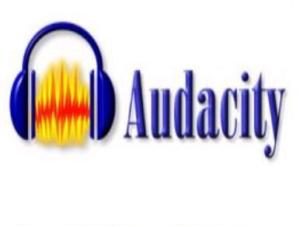Importance of Audacity options and tools
Audacity is a superb free multi-track audio editor & recorder for Windows , Mac OS X , Linux and the other operating systems , When you look at the Audacity Work-space , At the top there are several buttons that allow you to play , stop , pause , fast-forward , rewind or record a track , Selection tool in Audacity is the primary selection tool which allows you to highlight portions of a track to copy or paste .
Tools in Audacity
You can use the selection tool to jump to various points in your track or click & drag to select a portion of the track , If you move the cursor to the edge of a selection , a small hand with a finger appears , This allows you to change the size of the current selection .
You can change the selection of a track in Audacity , You can press the delete key on your keyboard to remove a highlighted portion of a track , You can copy , cut & paste key combination to move around segments of audio , Audacity automatically slides the audio immediately after the selection to fill in the gap left .
Playback & record meters show you the sound levels , Since the volume at which you listen to your sound can vary depending on how load your speakers or headphones are , These meters are important as a visual way in determining the overall levels of your sound .
Below there are some playback speed adjustment sliders , It is not used in most sound editing , but could be helpful in transcribing dictation , Be careful that this adjustment is not changed before you export your audio file .
Audacity offers an UNDO button , This feature is critical in undoing mistakes , Every time this button is pressed , the last previous actions are reversed in the order they occurred , So , pressing the undo button five times will undo the previous five actions .
Respectively , there is a redo button that will redo an action if you have already undone several steps , As with most software these days , the shortcut key to undo is Ctrl-Z ( PC ) or Command-Z ( Mac ) .
You can see Tool set in Audacity , Audacity comes with six tools to choose from , The tool that is selected will determine how your cursor interacts with the audio track , You should be aware of which tool is currently selected , as it will affect each click on the audio track .
You can see Envelope tool in Audacity that allows you to change the volume of certain portions of your audio track by visually shrinking it , This is useful for creating effects like fade-in & fade-outs , You can select the envelope tool from your toolbar , You will see a blue line appear around your track and selecting another tool will turn off the envelope function .
Making a fade using the envelope tool in Audacity , Drag the white anchor points all the way to the middle , A curve will form allowing you to create fades , To remove the anchor points , You can drag them to the left or right until they either combine with another set , or they are dragged completely off the track .
Audacity offers many different methods for manipulating the viewable work-space such as zoom tool , Zoom tool simply zooms the view in or out of the track , You can click on the track to expand it horizontally , To zoom out , simply right-click (PC) or control-click (Mac) on the track with the zoom tool , or hold down the shift key to change the zoom tool to a zoom out tool .
The drawing tool in Audacity is one of the least used tools , You have to be zoomed in extremely close to the audio file , The drawing tool enables you to edit each of these samples , which will appear as anchor points on the file , Time shift tool is used to move the segments of audio within a track , You can move a track with time shift tool , The other option is to copy & paste the block using the selection tool .
In order to split a track , you must first use the selection tool , then choose Split from the edit menu , When you use Split delete to remove a portion of a track in Audacity , a gap is left in the audio track which will be heard as silence and it works with highlighted portions of audio only .
The multi-tool in Audacity can either be one of the most useful or one of the most confusing tools in the program , It is a combination of the selection , envelope & time shift tools , Its functionality is determined by what part of the track you click & the motions used to drag the portions of the track .
You should only import uncompressed audio into any sound editing program , So , you should import .wav, .aiff or another lossless file type , When the file is compressed , it loses some quality , To import audio into Audacity , click on the File menu and select import –> Audio , Once imported , you can use the space bar to play your audio file or press the green play button at the top .
You can add Labels to identify Audio Segments , When working with any audio program , you should mark the areas of your audio to help you identify different segments of your track , Editing audio visually using an ambiguous waveform can be difficult , especially with longer audio tracks .
Audacity , like many audio programs , includes a mechanism for labeling different areas of your audio track and using those markers to help you edit , click on the part of your track that you want to label with the selection tool , then select the Tracks menu and select add Label At Selection , or CTRL-B (PC) Command-B (Mac) .
You can add a label to a track in Audacity menu , A new special labels track will be created if you did not already have a labels track , Type in a name for the label you just created , You can split labeled regions in Audacity , There are lots of other features you can do with labels , such as exporting the segments of your track to separate files using File –> Export Multiple .
You can add multiple labels that helps you in the editing process by marking particular segments and allowing you to select them , Labels can mark a span of audio with markers called boundaries , This span can be used to help you edit audio , Click on one of the boundaries with the selection tool , then drag the selection to the other boundary , You can do this in either the audio track or the labels layer .
There are filters that help you manipulate your audio track , The noise remover filter can remove sounds such as hisses & hums from your audio track , It cannot remove distinct sounds such as a voice or interruption , So , To reduce constant sounds that affect large portions of your track , you should sample the portion of your audio track that has only the noise you wish to reduce .
You can highlight the portion of your track that only has the noise , or else the noise removal will sample your entire track , You can select noise from track for noise removal , under the Effect menu select Utility –> Noise Removal , You can use Noise removal dialogue , You can play with the sliders at the bottom portion of the dialogue , The noise removal tool only reduces the unwanted noise .
Exporting audio tracks in Audacity is a pretty straight-forward process , From the File menu , you have two options for exporting , you can either Export or Export Selection , When you choose Export Selection , you will export highlighted regions of your audio tracks only , This allows you to export only a certain segment of your audio .
You can import each track , and along the way , you should save your project to prevent losing any hard work , Audacity saves in its own proprietary format called Audacity Project (.AUP) only , You can save warning dialogue in Audacity , You can disable this warning from appearing in the future by checking the box , A second dialogue box may appear asking you about any connected media .
You can connect media during saving in Audacity , What this dialogue is asking is whether you want to copy the audio files that are a part of your project into a special data folder that is near your Audacity (.AUP) project file .
Audacity will create a special data folder named after the project name , if your project is named “test” the folder would appear as “test_data“ , This data folder contains the information about your project , If you wish to transfer your project to another computer , you will have to copy both the .AUP project file and this data folder .
One of the foundations of audio editing is the mixing phase , This is where you take several edited individual tracks & mix them together to form a complete audio piece , To begin mixing , import two or more audio tracks into your project , You can use the time shift tool to move the tracks left or right to adjust the timing , You can mix two tracks together in Audacity .
Once you have imported multiple tracks of audio , it is important to name each track to help identify what is on them , You can label the tracks in Audacity , You can click on the drop-down menu just to the right of the close “X” button , and select name , Identifying tracks is important to come back to an old project .
If you need to listen to only one track temporarily without the distraction of the others , you can use the mute and solo buttons which will temporarily shut off other tracks , Mute will turn off the current track , and solo will turn off all other track except the one that is soloed , These are especially useful when mixing large projects with lots of tracks .
You can use Demystifying Stereo and Mono , The Tracks can be either stereo or mono , Stereo refers to a track where there are two channels that are distinctly different , It will appear as one track , but with two wave-forms in it , Mono , Where a single track is distributed to both channels , each track can be specified to either the left channel , right channel , mono or placed in a stereo-pair .
Most interviews are done with a single mono microphone , So , you always want to use the mono setting for each track , You can change stereo tracks to mono tracks , Some digital audio recorders have stereo microphones and will record two tracks of audio as a stereo-pair .




